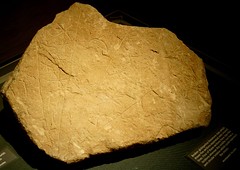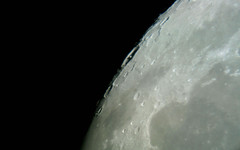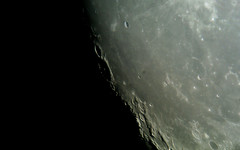Theophilus

For the last couple of weeks, any attempt at a good night's observing were thwarted by excessve humidity, hight cloud or overcast skies and I have missed the opportunity offered by the April new moon period to observe the Virgo cluster of galaxies in the evening. Tonight wasn't too bad, at least I could photograph the crescent moon, view Venus now showing a very obvious gibbous phase and have a look at Saturn. I didn't push the magnification but I could still see Titan to the East and Rhea to the West. The photo above was taken tonight at 19:00 UTC. The crater Theophilus is in the centre exactly on the terminator. At the time I viewed it, the sun was just catching the top of the central peak; a magnificent sight.




